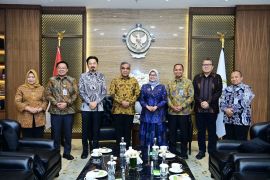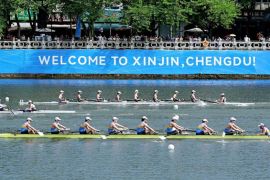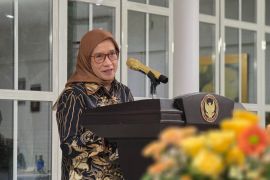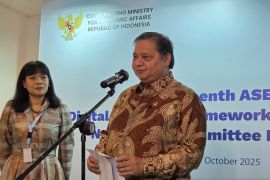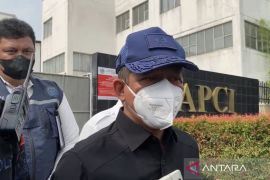The Director General of Domestic Trade of the Trade Ministry, Tjahya Widayanti, said here on Wednesday that the preparation for the market operation would be made after a coordinative meeting at the office of the Coordinating Minister for Economic Affairs.
"We will hold a meeting first. But I have prepared the letter tasking Bulog (state logistic agency) to conduct the market operation," Tjahya stated.
According to Tjahya, Bulog still has adequate stock for market operation, but the amount of the medium quality rice in the operation would still be discussed.
"We will see. The amount many not necessarily be as large as 75 thousand tons at once, but it will be gradual," she added.
Meanwhile, President Director of Food Station Tjipinang Jaya, Arief Prasetyo Adi, noted that rice stock in the wholesale market has begun to decline since the implementation of Trade Minister Decree no. 57/2017 on rice ceiling price.
Currently, rice stock in Cipinang Wholesale Rice Market has reached some 53 thousand tons, of which 60-70 percent are premium quality rice.
Under the new regulation, rice ceiling price in Java, Lampung, South Sumatra, Bali, West Nusa Tenggara, and Sulawesi was set at Rp9,450 per kilogram for medium quality and Rp12.8 thousand per kilogram for premium quality rice.
The price in Sumatra, except Lampung and South Sumatra, East Nusa Tenggara, and Kalimantan, was set at Rp9,950 per kilogram for medium quality rice and Rp13.3 thousand per kilogram for premium rice.
"With the current price of unhusked rice, traders prefer to produce premium price. The market could not determine the rate for medium quality and premium quality rice," Arief explained.
Medium quality rice has 95 percent of milling degree, 14 percent of maximum moisture content, and 25 percent of maximum broken rice content.
Premium quality rice has 95 percent of milling degree, 14 percent of maximum moisture content, and 15 percent of maximum broken rice content.
"Definition for medium and premium quality rice is different from the previous ones. Previously, premium rice had maximum broken rice content of five percent, and now it is 15 percent," he revealed.
The government has set the ceiling price for medium and premium quality rice in an effort to sustain peoples purchasing power and control inflation rate. The regulation took effect on Sept 1.
However, since the implementation of the regulation, supply for medium quality rice has declined, whereas, supply for premium rice has increased. (*)
Editor: Heru Purwanto
Copyright © ANTARA 2017
